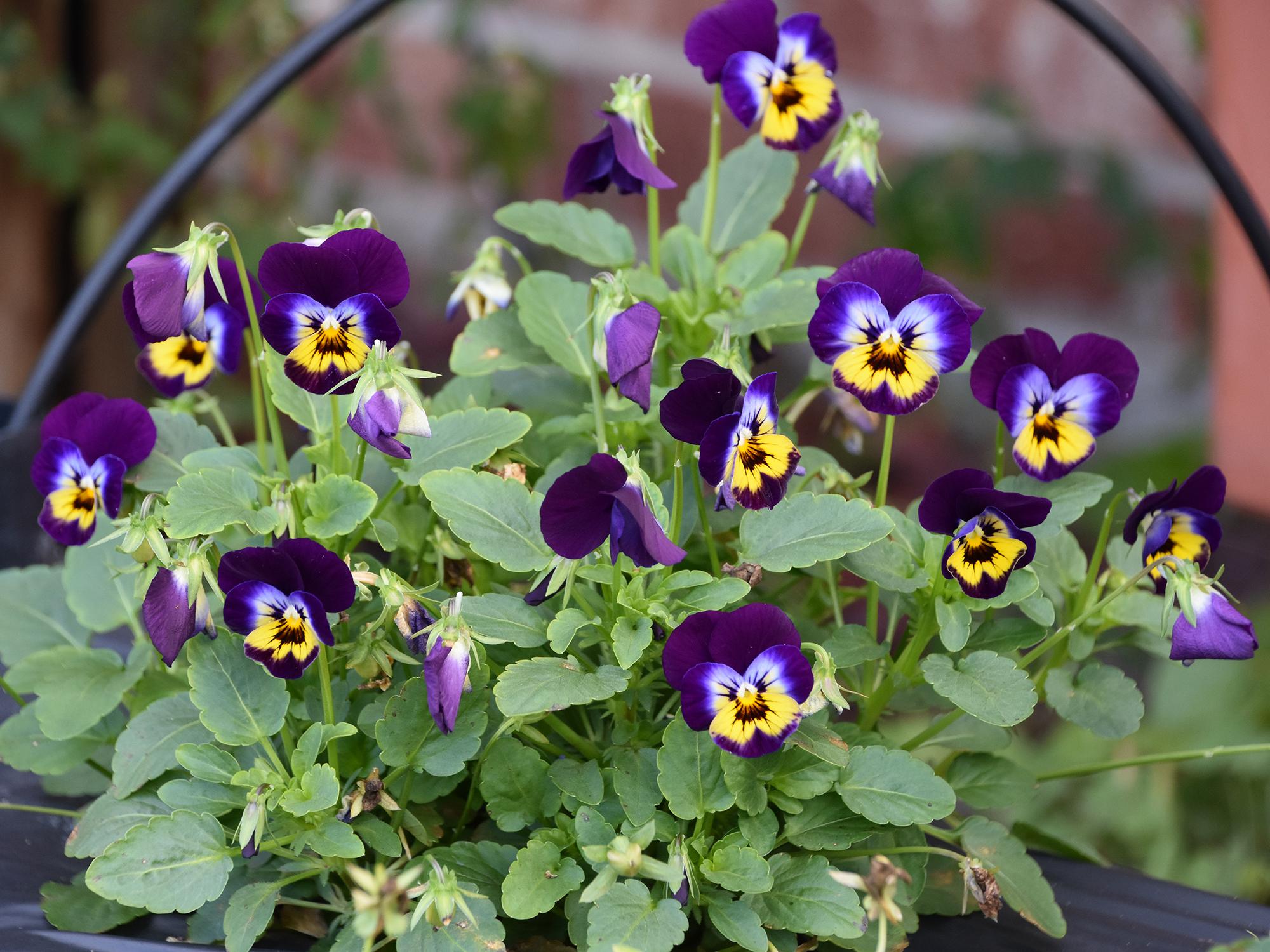Information Possibly Outdated
The information presented on this page was originally released on November 20, 2017. It may not be outdated, but please search our site for more current information. If you plan to quote or reference this information in a publication, please check with the Extension specialist or author before proceeding.
Sorbet violas are big winter performers
The last two weeks, I've told you about two of my top three cool-season flowering bedding plants. Today, I'm going to complete the trifecta with another plant everyone should have in their landscape: the viola.
Violas may have smaller flowers than their cousin, the pansy, but they're maybe even tougher and more tolerant of cold, winter weather than pansies. These plants are beautiful massed in landscape beds, and they can be great performers all the way to Easter.
Another name for violas is Johnny jump up, due to the fact that they are prolific seed producers and seem to pop up in random places in the garden. Wherever I have planted violas in my yard, they continued to reappear around the landscape for a least a couple of more years. Whenever I spot these volunteers, I always let them grow to continue the cycle.
The Sorbet series is my favorite viola variety. The plants are about 4 to 6 inches tall and wide. When mass planted, they seem to cover the landscape with a floral blanket. These colorful flowers are displayed above the foliage to really show off.
Sorbet violas resist stretching and stay compact through the season, even as the temperatures start to rise in the spring. Their best trait is the color selection, which seems absolutely endless, with at least 25 different colors available.
Plant violas in full sun. All violas need to grow in consistently moist soil. It is especially important to monitor moisture in containers. I like to plant a few violas in sconces on my back fence, but I always seem to forget to water them. If the roots get a little dry, flower production turns off, which is not a good thing. I need to run some irrigation lines to these containers to take care of that problem.
Viola root systems must get established before cold weather set in. The best news is that it's not too late to start planting now. I always put a couple of teaspoons of controlled-release fertilizer in the planting hole and then apply water-soluble fertilizer every three weeks during normal watering, which keeps the plants at their flowering best through the cool season.
When you go shopping, you'll see violas at the garden centers in packs and in 3- or 4-inch pots. Which one should you choose?
The pack plants are a little cheaper per plant and have more per flat, but they will take longer to fill in. At this date in late November, I would choose the larger containers. The plants will be bigger and a little more expensive, but you'll get more instant effect.
One last piece of advice about planting violas. There is nothing lonelier than a viola planted by itself in a big flower bed. For the best landscape performance and display, always plant violas in big masses.
If you'd like more information about violas, watch our Southern Gardening TV segment "Voilà Viola" at http://extension.msstate.edu/southern-gardening/video/2016/voila-viola-nov-27
It's still not too late to pick up some violas for your garden and landscape, but don't wait because supplies are dwindling. Besides that, it's a wonderful thing to visit the garden center in November knowing it's not too late to plant beautiful things in your landscape.





